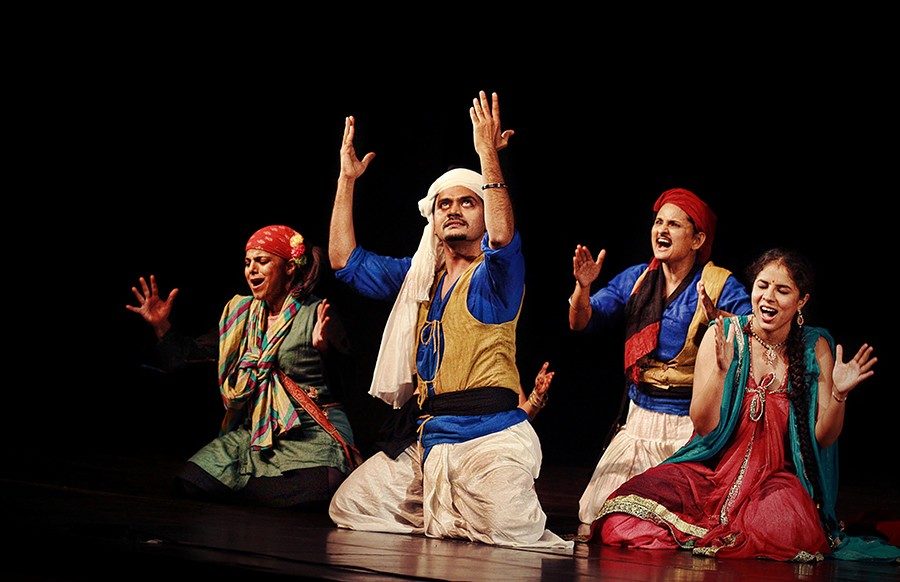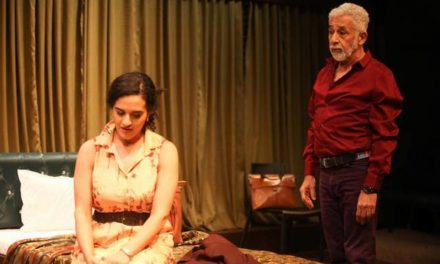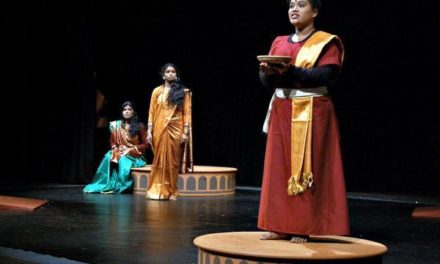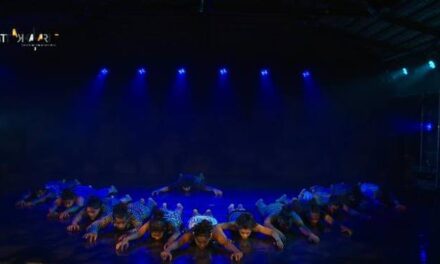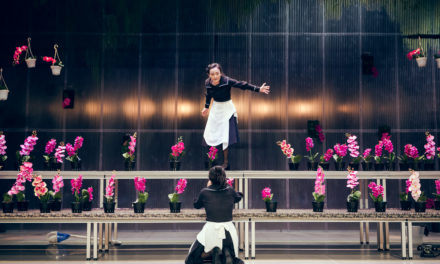Hamara Shakespeare: Shakespeare and the Hindi Theatre in India
Shakespeare has been performed in India for over two centuries now in various Indian languages. Although Shakespeare’s presence was felt the most in cities like Calcutta and Bombay, his plays were not limited to these regions. His plays have travelled across the length and breadth of India. The 1964 survey of Shakespeare translations and adaptations by The Indian National Library, Calcutta, records 128 in Bengali, 97 in Marathi, 70 in Hindi and 66 in Kannada. It is difficult to count the innumerable Parsi productions either based partially or completely on Shakespeare plays. The data clearly reveals that Shakespeare had influenced diverse theatrical traditions in India in different degrees. The present essay tries to study the Shakespeare reception in one amongst many such theatrical traditions of India i.e. the Hindi drama and theatre.
Unlike Marathi, Bengali and Kannada theatres, Hindi did not have professional theatres during the colonial period. Hindustani was employed by Parsi theatre for its performances but Hindi theatre per se distanced itself from Parsi theatre for its ‘vulgarity’, ‘crudity’ and ‘commercialism’ from the very beginning. It was largely in reaction to Parsi theatre that Hindi drama was established by Bhartendu Harishchandra (1850-85) who is generally referred to as ‘father of modern Hindi theatre’ in the mid-19th century. Critical of Parsi theatre, Bhartendu propagated a theatre which would have an edifying effect on the society. He not only wrote plays but also staged them and often travelled to various towns. Among his important plays are Vaidiki Himsa Himsa na Bhavati (Vedic Violence is not Violence, 1876), Bharat Durdasha (India’s Plight, 1875), Satya Harishchandra (Truthful Harishchandra, 1876), Andher Nagari (City of Darkness, 1881) and Nildevi (1881). He was also a prolific translator and translated a number of plays from Sanskrit, Bengali and English. His translation of Merchant of Venice as Durlabh Bandhu (Rare Friend, 1880) was the second translation of a Shakespeare play in Hindi, the first being Munshi Imdad Ali’s Bhram Jhalak (Comedy of Errors, 1879).
Bhartendu translated Durlabh Bandhu from the Bengali translation titled Surlata Natak (1877) by Pyarilal Mukhopadhyay. In his version, Bhartendu replaces the names of characters and places with Indian names but maintains their phonetic similarity. Thus Antonio is Anant, Bassanio is Vasant, Salerio is Saral, Portia is Purashree, Shylock is Sherlaksh and Venice is Vanshnagar. No changes are made to the original plot. However, foreign references are substituted with familiar ones. For instance, Portia’s lines (72-81) in Act I, sc. ii,
Portia: You know I say nothing to him, for he understands not me, nor I him: he hath neither Latin, French, nor Italian; and you will come into the court and swear that I have a poor pennyworth in the English. … I think he bought his doublet in Italy, his round hose in France, his bonnet in Germany, and his behaviour; everywhere.
are translated as follows:
Purashri: Who na Hindi janta hai na Braj bhasha na Marwari aur tum shapathpurvak keh sakogi ki Maithil mein mujhe kitna nyoon abhyaas hai. Usne apna ang Marwaar mein mol liya hai, pajama Mathura mein banvaya hai, topi Gujrat se mangani laya hai (cited in Sood 284).
Here Latin, French and Italian have been replaced by Hindi, Braj and Marvari. Also, a doublet is substituted by kurta (shirt), round hose by pajamas and bonnet by cap. The Christian-Jew conflict is transformed into Hindu-Jain tussle. Bhartendu translates Shailaksha’s (Shylock’s) lines (“He has disgrac’d me and hind’red me half a million …) in 3. 1. 11 as:
who sada meri hani par hasa hai,
mere labh ki ninda ki hai, meri jati
ki pratishtha ki hai, mere vyarharo me
tach mari hai, mere mitro ko thanda
aur mere shatruyo ko garam kiya hai,
aur yah sab kis liye? Keval is
liye ki mai Jaini hu (cited in Das 52).
Nandi Bhatia sees the play as a “struggle between Indians and British, a struggle in which Anant resembles the colonized, and Shailaksha, a foreigner in Vanshnagar, symbolizes the foreign foe” (2004, 63-4). She further argues,
Rendered in Hindi at a time when the rulers’ official policies became increasingly repressive toward Indians on legal grounds, Durlabh Bandhu becomes a parable for a strategy for independence from the growing encroachment of British authority. Shailaksha, in this parable, represents the colonizer, who with his deceit, cunning, and manipulative legal rhetoric attempts to kill the honest citizen of Vanshnagar and appropriate his wealth. […] Anant’s eventual victory and escape from the manipulation of Shailaksha affirm the victory of the nation over its enemy. In rewriting the play, Bhartendu’s message at once becomes clear: subverting the rhetoric of the oppressor is crucial to the resistance strategies of the oppressed. On another level, the appropriation of the play conveys that knowledge of colonial models can be turned into a tool for striking back at the colonizer (63-4).
Whether the play was ever staged is debatable as there is no documentary evidence available. With the premature death of Bhartendu at an early age of 35, Hindi theatre suffered a setback though there were sporadic attempts by amateur groups to sustain its activities. In the absence of regular theatrical activity, Shakespeare translations were largely confined to literary circles. Thus, most of the Shakespeare translations in Hindi prior to Independence were done as a literary exercise rather than for the stage. These are ‘faithful’ literary translations. As the translators did not have to cater to an audience as in the popular Parsi theatre, they did not indigenize or transcreate the English plays to the extent Parsi or Marathi theatres did. However, it is important to look at the pre-Independence translations because Shakespeare exerted an important influence on the emerging Hindi drama between the mid- 19th and early 20th centuries.
The Hindi translations of Shakespeare’s plays can be broadly classified into two categories: prose narratives introducing Shakespeare to Hindi readers and ‘faithful’ translations as plays. Lala Sitaram, a prolific translator, translated 15 plays of Shakespeare between 1900 and 1926. His translations follow the original plays closely with the aim to counteract the “demoralizing effects upon the minds of the readers” made by the works of the “vernacular romances” (cited in Verma 33). His Bhool Bhullaiyan (Comedy of Errors, 1915) is a faithful rendition in prose. The names of the characters and the places are changed to Indian ones while maintaining the phonetic affinity with the original as for example, Silanidhi for Solinus, Ajina for Aegeon, Antapal for Antipholus, Damaru for Dromio, Amalika for Aemilia, Adra for Adriana (Mishra 34). The lines (Act II, sc. ii; 43-52) spoken by Dromio are translated so literally that it loses all its charm. His other translations like Man Mohan ka Jaal (Much Ado About Nothing, 1912), Apni Apni Ruchi (As You Like It, 1915), Bagula Bhagat (Measure for Measure, 1915), Sati-Pariksha (Cymbeline, 1915), Jangal men Mangal (The Tempest, 1915), Prem Kasauti (Romeo Juliet, 1931), all indigenize the names and places but otherwise follow the original texts closely. Among the histories, Sitaram translated Richard II as Raja Richard Dwitiya (1915) and Henry V as Raja Henry Pancham (1915). No other translator has tried to translate these two histories in Hindi probably because of “wide unfamiliarity in India with these historical backgrounds” (Trivedi 1978, 83). Since Shakespeare’s history plays are steeped in the English history, it is difficult for the Indian translator to ‘
Since Shakespeare’s history plays are steeped in the English history, it is difficult for the Indian translator to ‘Indiannize’ them. As Mishra observes, “As the translation is too literal, it becomes a mere catalogue of historical facts, and has little appeal to a reader” (53). Among the Shakespearean tragedies, Sitaram keeps the original names and places and follows the text closely. His Hamlet (1915) is in prose with occasional verse. Mishra notes that this translation “decidedly marks an advance upon all its predecessors. The prose is chaste, noble and dignified; the sense becomes crystal-clear and the verses … do not degenerate into mere doggerel” (60). Similarly, Sitaram translated Othello as Jhutha Sandesh (1915), King Lear as Raja Lear (1915) and Macbeth (1926) following the original closely. Rajiva Verma states that although Sitaram’s translations have not been rated highly, “he did succeed in popularizing Shakespeare in the Hindi-speaking regions. Some of his translations were so popular that they went through several editions during the course of a few years” (33). Other Hindi translators of Shakespeare during this period were Ganga Prasad, Kashinath Khattri, Jai Vijay Narain Singh Sharma, Seth Govind Das, Mathura Prasad Chaudhari and Govind Prasad Ghidiyal. Some of the plays translated or adapted for Parsi theatre were also put into Devnagri script like Narain Prasad Betab’s Gorakh Dhanda (Comedy of Errors, 1912) into Hindi by B. Sinha (1917), Munshi Mehdi Hasan Ahsan’s Bhool Bhullaiyan (Twelfth Night, 1905) and Munshi Arzu Sahib’s Khune Nahaq (Hamlet) by Shivaram Das Gupta.
Only in post-Independence India Hindi translations of Shakespeare were done for the stage although literary translations continued. Rangeya Raghav’s translations, for instance, are largely done in prose and have not been staged often. His 15 translations of Shakespeare’s plays during the 1957-58 are rather a hasty exercise. Raghav observes, “A language which does not possess translations of Shakespeare cannot be counted among the more developed languages” (cited in Trivedi 1993, 33). All his translations follow the original texts closely. He retains all the original names, places, allusions and references. Shakespearean puns too are sometimes retained and at other times explained in the footnotes. In Barhevin Raaat (Twelfth Night, 1957), for instance, the translator retains the pun on ‘dear’ (Act III, sc. ii: 60-63):
Fabian: This is a dear manakin to you, Sir Toby
Sir Toby: I have been dear to him, lad, some two thousand
strong, or so.
In the Hindi translation Raghav replaces ‘dear’ by ‘amulya‘ and the pun is retained (Raghav 2006, 69):
Fabian: Sir Toby yah bhi aapke amulya aadmi hain.
Sir Tobi: Are main isko amulya hu. Jab se yeh yahan hai,
tab se iske karib do hazaar pound kharch ho gaye hain.
On the other hand, in the opening scene of Twelfth Night, Curio asks the Duke (Act I, sc. i: 15-22)
Curio: Will you go hunt, my lord?
Duke: What, Curio?
Curio: The hart.
Duke: Why, so I do, the noblest that I have.
O! when mine eyes did see Olivia first,
Me thought she purg’d the air of pestilence.
That instant was I turn’d into a hart,
And my desires, like fell and cruel hounds,
E’er since pursue me.
In the footnotes, Raghav explains the pun Shakespeare plays upon ‘hart’ as ‘hunt’ and ‘heart’ and also states that since there is no pun for ‘hart’ in Hindi that has both the meanings, it could not be used in translation (I. i). At various places Raghav transcribes English words in Devanagri script and sometimes translates English words and phrases too literally that they do not seem appropriate. For instance, as Mishra points out, in Nishful Prem (Love’s Labour Lost, 1958), ‘school of night’ is literally translated as ‘ratri ke skool‘ which does not mean anything in Hindi (33).
Other Hindi translations of Shakespeare in the post-Independence India include Mano na Mano (As You Like It, 1960) and Athens ka Raja Timon (Timon of Athens, 1960) by Dharam Pal Shastri; Barehvin Raat (Twelfth Night, 1961) by Kuldeep Kapur; Barehvin Raat (Twelfth Night, 1962) by Shyam Sunder Suman; Othello (1962) by Vidyarthi Diwakar Prasad; and Hamlet (1988) by Amrit Rai. Most of these translations as short prose narratives or prose translations follow the original closely. Kuldeep Kapoor’s Barehvin Raat, for instance, is in the form of a novel. There is no record of these translations being staged. Two translators stand out during this period – Harivanshrai Bachchan and Raghuvir Sahay. As powerful poets, they were able to translate Shakespeare’s plays into verse, a rare feat achieved in Hindi translations of Shakespeare. The success of their translations is evident in the fact that they have been successfully staged.
Bachchan translated Macbeth (1957), Othello (1959), Hamlet (1969) and King Lear (1972). Macbeth was first telecast as a radio play by All India Radio (AIR) in February 1958 and was subsequently published in 1959. The play was staged by the Hindi Shakespeare Stage on 18th, 19th and 20th December 1958 at the Fine Arts Theatre in Delhi after 6 months of rehearsals. Bachchan’s Macbeth is significant because it was the first Hindi Shakespeare play in verse to be staged. It appears that the biggest problem that Hindi translators have faced in translating Shakespeare is that of the metre. Hindi does not have a metre that corresponds to the Shakespearean blank verse. Bachchan’s success in translating Macbeth and Othello (1959) lies in devising an unrhymed verse using the traditional rola metre that comes quite close to blank verse. In the ‘Introduction’ to Othello, Bachchan justifies his use of rola as follows:
Like blank verse, rola too has that rhythm which, being suitable for poetry, does not leave the naturalness found in the spoken prose. The biggest strength of blank verse is that it is the closest to the rhythm of spoken English. During the staging of Macbeth most of the audiences did not even realize that verse is being spoken. While criticizing the acting, many well-known newspapers wrote that the translation is in prose-verse. But this mistake made the fact of the translation clear. The translation gave the feeling of verse and the sound of prose (Bachchan Rachnavali 118; trans. mine).
His choice of rola metre has been questioned by some as it is more suited for descriptive poetry rather than the dramatic. Rajiva Verma argues,
My own feeling is that this metre does come as close to iambic pentameter as the nature of Hindi allows. What is wrong is not the choice of metre but the mechanical and monotonous fashion in which Bachchan uses it. So strong is the metrical pattern that while reading his lines one is inexorably drawn into a singsong rhythm in spite of one’s best effort to stick to the speaking voice. The metre is too emphatic and draws attention to itself all the time. Further, in trying to stick to his metre closely Bachchan has often to distort the syntax of the spoken language. His verse thus sounds too much like verse and too little like speech and thus fails to capture the characteristic rhythm of Shakespearean blank verse, which never loses touch with the spoken language (35).
However, Shakespearean verse has been beautifully rendered by Bachchan as can be seen in the lines spoken by Macbeth in Act V, sc. v (17-28), “She should have died hereafter” have been translated as follows:
Macbeth: Unhen kisi din marna hi tha:
samay kabhi ata hai aisi baat ke liye –
aaj, aaj ke baad, aaj phira-phira se aakar
chalta jata din-pratidin, avichal kram se,
jivan-path par, jab tak chhor nahin aa jata;
aur hamare sare aaj, ujale, kaale
kal mein badle akl ke andhe insaano ko
andhkaarmay kaal-gart me pahuncha dete.
Thandi ho ja, thandi ja, kshanbhangur lau!
Jivan keval ek svapn hai, chalta-phirta;
ek din abhineta, jo do din duniya ke
rangmanch par hans-rokar gaayab ho jata,
koi pata nahin phir pata: yeh, kissa hai
kisi moodh ka ki jismein shabdaadamabr
bad kintu kuchh saar nahin hai (103).
In his “Preface” to Macbeth, Bachchan reproduces a review in The Indian Express which suggested that “along with the Hindi translation of Macbeth the characters too should have been Indianised – i.e. Macbeth should have been made a Hindu king and so too other characters because English characters speaking in Hindi seems fake and unnatural. Such mentality reveals sheer ignorance towards the tradition of translation and that of drama” (cited in Bachchan Rachnavali 24; trans. mine).
Probably the most successful Shakespeare translation in Hindi to be staged was done by Raghuvir Sahay. Sahay’s play Barnam Van (Macbeth, 1979) was directed by B V Karanth the then director of National School of Drama. Barnam Van has, in fact, become one of the path-breaking productions in Indian theatre and probably the best translation to be staged in Hindi. Karanth (1928-2002) was one of the most innovative theatre directors of post-Independence Indian theatre. The two major influences on Karanth that get reflected in his work are his deep involvement with folk and traditional performances since his childhood and his training in classical music. Folk music had always captivated Karanth and he made use of folk and traditional music not only of Karnataka but from other parts of the country in his plays. Although trained in classical music he did not mind adjusting the rules of classical music to suit the musical needs of theatre. He could create music from stones, wood pieces, chairs or scrap – a characteristic feature of many of his productions. Karanth used music not only as an ornament for embellishment but for interpreting a play. Also, deeply rooted in traditional and folk forms of performance, Karanth created individualistic forms for his theatre deriving from these conventions.
Karanth produced Barnam Van for the National School for Drama Repertory in 1979. He cast the play in a non-realistic and stylized form. He decided to use elements from yakshagana for the play. In his own words,
I do not find myself capable of producing Shakespeare the way he is produced in his own country. Were I to do so, it would be false of me. Therefore my use of the Yakshagana form is not for my own sake, but because it is a part of my awareness and expression (‘Director’s Note’).
The choice of yakshgana was determined by the fact that Karanth found Macbeth “overflow[ing] with rasas, such as valour, wrath, terror and wonder, and the characters and situations have a universality and larger-than life quality which can be well expressed in the yakshagan style” (‘Director’s Note’). Karanth did not want to use the already existing Hindi translations of either Raghav or Bachchan. So he commissioned Raghuvir Sahay, the well-known Hindi poet, for his production. But even before the translation of the play had begun, the format was decided. Thus, it was for the translator to present the play to fit the form. Unlike Bachchan who had used the rola metre for his translation, Sahay chose to translate the play using the “kavitta metre whose subtle rhythm gives infinite freedom for creative vocal expression and lends itself to the entire spectrum of moods” (‘A Word from the Translator’). Although much of the translation follows the original verse pattern a scene or two have been rendered into prose. For example, Lady Macbeth’s speech in Act I, sc. vii, in prose has been rendered into verse by Sahay:
Lady Macbeth: I have given suck, and know
How tender ’tis to love the baby that milks me:
I would, while it was smiling in my face,
Have pluck’d my nipple from his boneless gums,
And dashed the brains out, had I so sworn as you
Have done to this.Macbeth: If we should fail,
Lady Macbeth: We fail!
But screw your courage to the sticking-place,
And we’ll not fail.
In Sahay’s translation the prose becomes verse as follows
Lady Macbeth: Main pila chuki hun doodh
Aur jaanti hun pyaar aanchal mein kaise umadta hai
par godi mein pade iktak niharte
dudhmunhe ke munh se main chhuda leti stan
patak kar kapaar phod daalti
agar kai pran aisa kiye hue hoti teri tarah
Macbeth: Yadi asaphal hum rahe?
Lady Macbeth: Asaphal hum?
Apne saahas ko tu chaanpe reh usi thor
to hum honge na viphal (Act I, sc. 7, 37).
Instead of translating the original in a literal manner, Sahay concentrated ‘on capturing the sound patterns of sentences as they occur in the original so as to recreate the resonance of the language that was heard on the Elizabethan stage’ (‘A Word from the Translator’). Although the names of the characters and places have been retained, topical references to Scotland and England were dispensed away with. For instance, in Act 1, sc. ii when a soldier talks with Duncan he addresses him as Mark, King of Scotland. However, in the translation, Sahay omits the reference to Scotland and the soldier addresses Duncan as raja (king). As Sahay explains, “[D]espite being burdened by the ostentatious verbosity of its times, Shakespeare’s language at places glows with quiet simplicity, wherein rests his genius and which I have found essential to my translation (‘A Word from the Translator’). An example of this simplicity of language may be found at the outset of the play where Sahay translates the dialogues of the witches in a very simple and rustic language (Act I, sc. I, 15):
Daayan 1: Aaj mile hain hamm
pher milenge kabb?
Daiv garjai bijuri chamkai meha barse tabbDaayan 2: Hum milenge jabb
kattajhujh hui le
Finally, Sahay left the play to the director to edit it to suit the form.
Barnam Van was first staged at the open-air stage of National School of Drama in 1979. The huge banyan tree with its branches coming on to the stage cast a maze of shadows on the stage. Jaidev Taneja observes, “With the leaves stirring in the air, lights seemed to be creating waves; they created a scene of a jungle where the witches dance in fearful gestures and demonic faces” (105). The powerful visual symbolizes the theme of Macbeth: “the labyrinthine jungle of ambition, which ensnares and destroys man” (Karanth, ‘Director’s Note’). The witches are a creation of Macbeth’s own mind and are “imaged as creatures of the forest, emerging from the entrails of the tree, covered with drapes painted over with emblematic branchlike shapes” (Trivedi 2005, 163). As mentioned earlier, Karanth made use of elements from yakshagan especially for characters’ entry and exit, battle scenes, and the expression of emotional tensions through the rhythm of body movements (‘Director’s Note’).
In yakshagan, as in other traditional forms of India, a lot of emphasis is given to the entry and exit of characters. These are highly stylized movements that become a performance in their own right. In Baranam Van, characters enter and exit with dance steps taken from yakshagan. Unlike kathakali, yakshagan relies on the movements of the whole body and not just face and hands. Karanth does not always use conventional yakshagan movements but allows leaps and pirouettes leaving out the movement of shoulders and hands. In traditional yakshagan characters usually enter from behind a half-curtain called tere held by two stagehands. In Baranm Van, Karanth uses the half-curtain for the entry of characters and for more dramatic purposes to conceal the witches’ entry by shaking the curtains and making circular dance movements, draping the curtains around their bodies and suddenly removing them (Awasthi 1979, 41; trans. mine). Such creative use of the conventional half-curtain makes the scene dramatically effective and also enhances the suspense. The last scene showing the moving Birnam Wood has always been challenging for directors. Karanth makes ingenious use of half-curtains to meet the challenge. Malcolm’s army enters the stage draped in half-curtains having branches painted on them around their bodies. This gives the impression of the Birnam Wood proceeding towards Macbeth.
Music plays the central role in yakshagan. A traditional yakshagan troupe has one or two singers and at least three instrumentalists – a maddale drummer, one for chende, and one to provide the drone on a harmonium (Akshara 526). Karanth, himself a trained classical singer, makes music integral in all his productions. Barnam Vana is no exception, especially when he borrows so much from the yakshagan form for the production. Although the music in Barnam Van is of yakshagan style because Karanth found the rhythm of the kavitta metre quite close to the beat of chenda, Karanth makes certain alterations. As he explains in the ‘Director’s Note’, “[S]ince pure Yakshagan music can prove to be obscure and incomprehensible, I have introduced other Asian musical instruments such as bells and gongs”. The beat of chende and nakkara is used to emphasize the stylized movements of entry and exit of characters. Awasthi comments on Karanth’s use of music in following words:
The play begins with the music of chenda and nakkara, just like in the performance of yakshagan and kathakali. After that, the witches enter with a short sad alaap. Alaaps in male and female voices have been used quite effectively. When Macbeth decides to kill Duncan the nakkara underlines each line of his dialogue and the humming goes on in the background … In the sleep-walking scene, Lady Macbeth’s dialogues are supported by the beats of nakkara and chende coupled with the shrilling voices which gives the whole scene a ritualistic setting (1979, 41; trans. mine).
Besides musical instruments, Karanth also creates music out of wood pieces as is done in Japanese kabuki.
Costume is an elaborate affair in yakshagan. Characters in traditional yakshagan can be identified by the costumes typical to particular characters. Karanth does not entirely replicate yakshagan costumes for Barnam Van’s characters but with other traditional theatres like that of Cambodia, Bali, Japan, Burma and Indonesia (‘Director’s Note’). With such strong similarity with yakshagan for the production, one may be tempted to think that it is Macbeth in yakshagan form. As Karanth himself clarifies, it is in fact the other way round. Karanth has not cast the play rigidly in a traditional form nor surrenders to the form. A deliberate defamiliarisation with yakshagan is achieved by incorporating elements from other traditional forms and by modifying some of the conventions of yakshagan. Only those yakshagan elements have been incorporated which seem suitable for the visual presentation. Hence, it is yakshagan in Macbeth and not Macbeth in yakshagan.
Thus one can see that the Hindi response to Shakespeare has emerged differently in different times. From literal translations of his plays to more creative responses in postcolonial India Shakespeare has travelled some distance. One can argue that attempts like Barnam Van do not create a ‘counter-discourse’, as some other postcolonial appropriations of Shakespeare like Aime Cesaire’s A Tempest do, since the translator has been faithful to the Shakespearean content. However, this is also true that by moulding Shakespeare into the folk and traditional conventions of Indian forms such creative works defamiliarise Shakespeare completely making Shakespeare our contemporary and culturally more relevant for the Indian audience and readers.
Works Cited
Akshara, K V. ‘Kannada Theatre’, The Oxford Companion to Indian Theatre, ed. Ananda Lal. New Delhi, OUP. 2004.
Awasthi, Suresh. ‘Shakespeare mein Yakshagan’ [‘Yakshagan in Shakespeare’], Dinman 9-15 (September 1979): 40-43.
Bachchan, H R. Macbeth in Bachchan Rachnavali, (ed. Ajit Kumar), New Delhi, Rajkamal Publications, 1983.
—. Othello in Bachchan Rachnavali, (ed. Ajit Kumar), New Delhi, Rajkamal Publications, 1983.
Bhatia, Nandi. Acts of Authority/Acts of Resistance, New Delhi: OUP, 2004.
Das, S K. ‘Shakespeare in Indian Languages’ in India’s Shakespeare: Translation, Interpretation, and Performance, (Eds. Poonam Trivedi and Dennis Bartholomeusz), Delhi, Pearson Longman, 2005 :42-65.
Karanth, B V. ‘Director’s Note’, 1979.
Mishra, Jagdish Prasad. Shakespeare’s Impact on Hindi Literature. New Delhi: Munshiram Manoharlal, 1970.
Raghav, Rangey. Barahvin Raat [Twelfth Night], Delhi, Rajpal & Sons, 2006.
Sahay, Raghuvir. ‘A Word from the Translator’, 1979.
—. Barnam Van. New Delhi, Rajkamal Prakashan, 1980.
Shakespeare, William. The Merchant of Venice, Comedy of Errors, Twelfth Night, Macbeth. Shakespeare: Complete Works, (ed. W. J. Craig) London, OUP, 1966.
Sood, Sunila. Shakespeare ke Naatakon ka Hindi Anuvaad [Hindi Translations of Shakespeare’s Plays], Hyderabad: Milind Prakashan, 2008.
Taneja, Jaidev. ‘Karanth and his Total Theatre’, Theatre India 6 (2002): 101-116.
Trivedi, H K. ‘Hindi Translations of Shakespeare: A Historical Survey’, Shakespeare
Translation 5 (1978): 79-91.
—. Colonial Transactions: English Literature and India, Calcutta: Papyrus, 1993.
Trivedi, Poonam. ‘”Folk Shakespeare”: The Performance of Shakespeare in Traditional Indian Theater Forms‘ in India’s Shakespeare: Translation, Interpretation, and Performance, (eds. Poonam Trivedi and Dennis Bartholomeusz) .New Delhi, Pearson Longman, 2005: 152-71.
Verma, Rajiva. ‘Macbeth in India with Special Reference to Some Versions in Hindi’, Shakespeare Worldwide 14/15 (1995): 28-41.
This essay was originally posted on MuseIndia.com. Reposted with permission. To read the original article, click here.
This post was written by the author in their personal capacity.The opinions expressed in this article are the author’s own and do not reflect the view of The Theatre Times, their staff or collaborators.
This post was written by Vikram Singh Thakur.
The views expressed here belong to the author and do not necessarily reflect our views and opinions.

